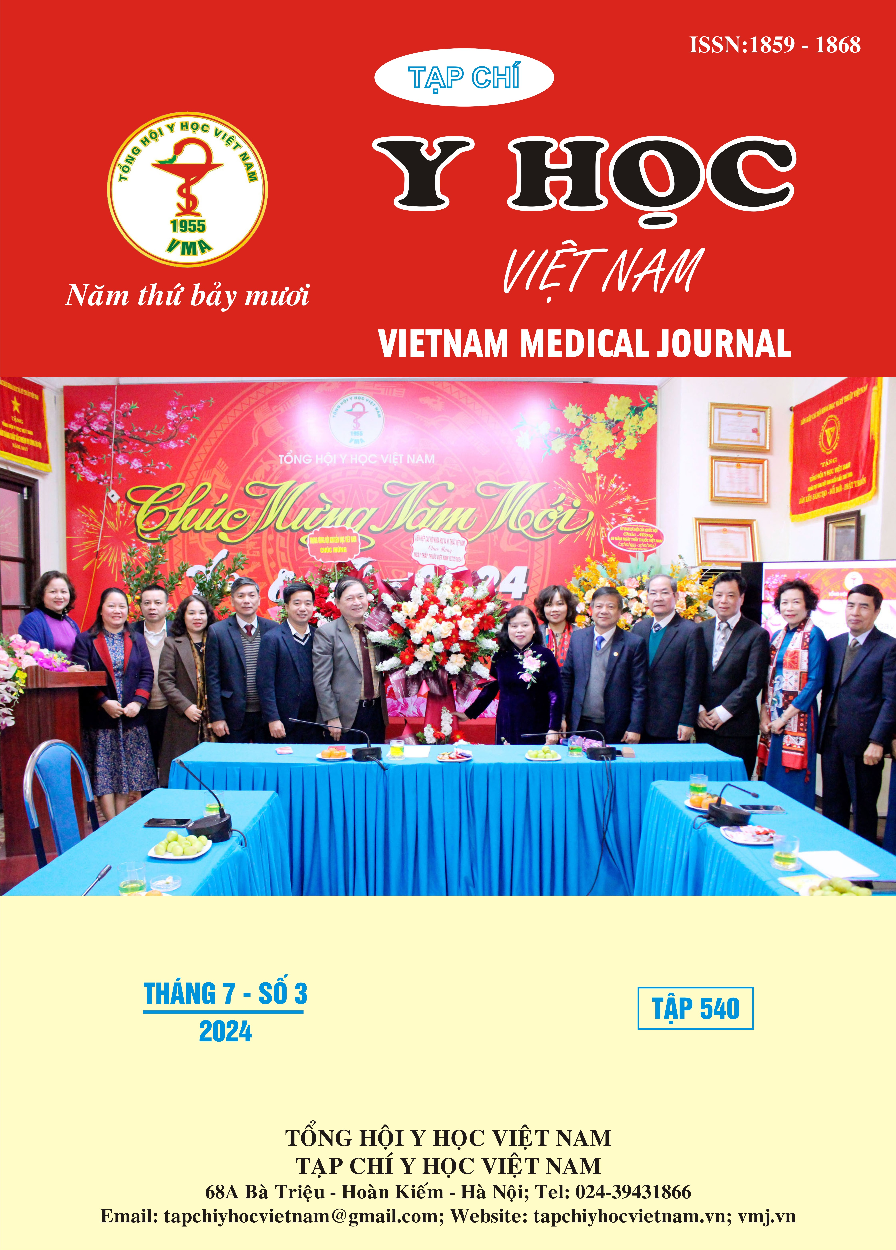THE OUTCOME OF SURGICALLY TREATED UNSTABLE PELVIC FRACTURE BY OPEN REDUCTION AND INTERNAL FIXATION
Main Article Content
Abstract
Background: Pelvic fracture management is a challenging obstacle for orthopedic surgeons. Open reduction and internal fixation surgery is currently an effective procedure for treating unstable pelvic fractures, which enhances anatomical reduction and patients’ quality of life postoperatively. Objectives: (1) Identifying some clinical characteristics of patients with unstable pelvic fractures; (2) Evaluating the surgical outcomes by open reduction and internal fixation on these patients. Material and methods: A cross-sectional descriptive and prospective study was carried out on 38 unstable pelvic fracture patients from June 2022 to June 2024 at Can Tho Central General Hospital. Results: the average age: 40,89 ± 14,91 years; the majority of fractures were classified in Tile B2.1 with 57.9%. Traffic accident was the most common reason for pelvic injury with 89,5%. The percentage of excellent and good anatomical reductions as well as Majeed’s score were 86,8% and 92,1%, respectively; bone union duration was an average of 12,2 ± 2,3 weeks. There was correlation between the 6th month Majeed score and the Short Form Health Survey 36 questionnaire version 1.0 (SF–36) (r = 0,529, p = 0,001, R2 = 0,280). Conclusions: Surgically treated unstable pelvic fracture with internal fixation brought very good functional outcomes.
Article Details
Keywords
unstable pelvic fracture, internal fixation, Tile classification, anatomical reduction, functional outcomes, Majeed’s score.
References
2. Abo-Elsoud M. et al. (2023), "Internal fixator vs external fixator in the management of unstable pelvic ring injuries: A prospective comparative cohort study", World Journal of Orthopedics. 14(7), tr. 562.
3. Abou-Khalil M. et al. (2020), "Results of open reduction internal fixation versus percutaneous iliosacral screw fixation for unstable pelvic ring injuries: retrospective study of 36 patients", European Journal of Orthopaedic Surgery & Traumatology. 30, tr. 877-884.
4. Lundin N. và Enocson A. (2023), "Complications after surgical treatment of pelvic fractures: a five-year follow-up of 194 patients", European Journal of Orthopaedic Surgery & Traumatology. 33(4), tr. 877-882.
5. Mostafa A.M. (2021), "An overview of the key principles and guidelines in the management of pelvic fractures", Journal of Perioperative Practice. 31(9), tr. 341-348.
6. Mostert C.Q.B et al. (2023), "Rates and risk factors of complications associated with operative treatment of pelvic fractures", European Journal of Orthopaedic Surgery & Traumatology. 33(5), tr. 1973-1980.
7. Nana C.T. et al. (2022), "Functional outcome of unstable pelvic fractures treated in a level III hospital in a developing country: a 10-year prospective observational study", Journal of Orthopaedic Surgery and Research. 17(1), tr. 198.
8. Portela P. (2019), "Outcome of unstable pelvic fractures after internal fixation: our experience", Ann Orthop Musculoskelet Disord. 2(1), tr. 1023.


